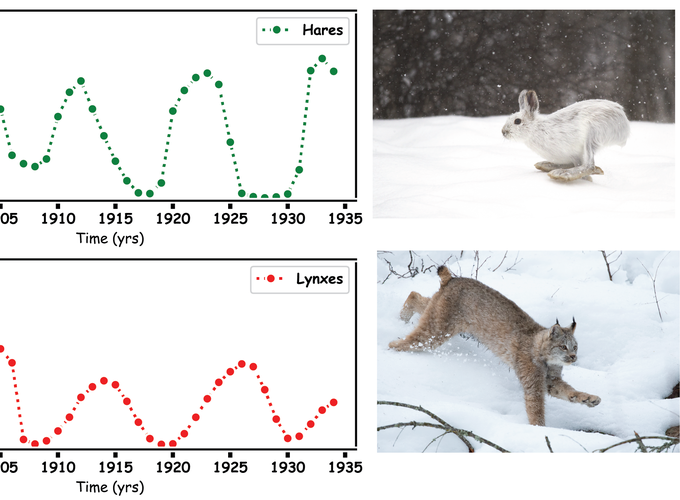In this workshop, I showed how maths can be used to model and explain things in the wild. The workshop was divided into two parts. This was first Maths in the Wild workshop.
Part 1: Modelling Predator-Prey Relationships
In the first part, students learned how graphs and maths can be used to model predator-prey relationships, such as lynxes and hares (Figure 1) or even people and social media. The maths not only recreated observations in the wild, but also modelled changes in the environment, such as the reintroduction of wolves into Ireland.
Part 2: How Maths and Neuroscience Inspire Machine Learning
In the second part, I explained how machine learning algorithms are inspired by maths and neuroscience. Students learned how to model decision-making, such as choosing to turn left or right. These same models have since been adapted to create self-driving cars.
References
- Brady RM and Butler JS (2021). The Circle of Life: The Mathematics of Predator-Prey Relationships. Front. Young Minds 9:651131. doi: 10.3389/frym.2021.651131
- Campos JL, Pandi M and Butler JS (2020). “Feeling” Ourselves Move: A Team Effort by Our Senses. Front. Young Minds 8:9. doi: 10.3389/frym.2020.00009
